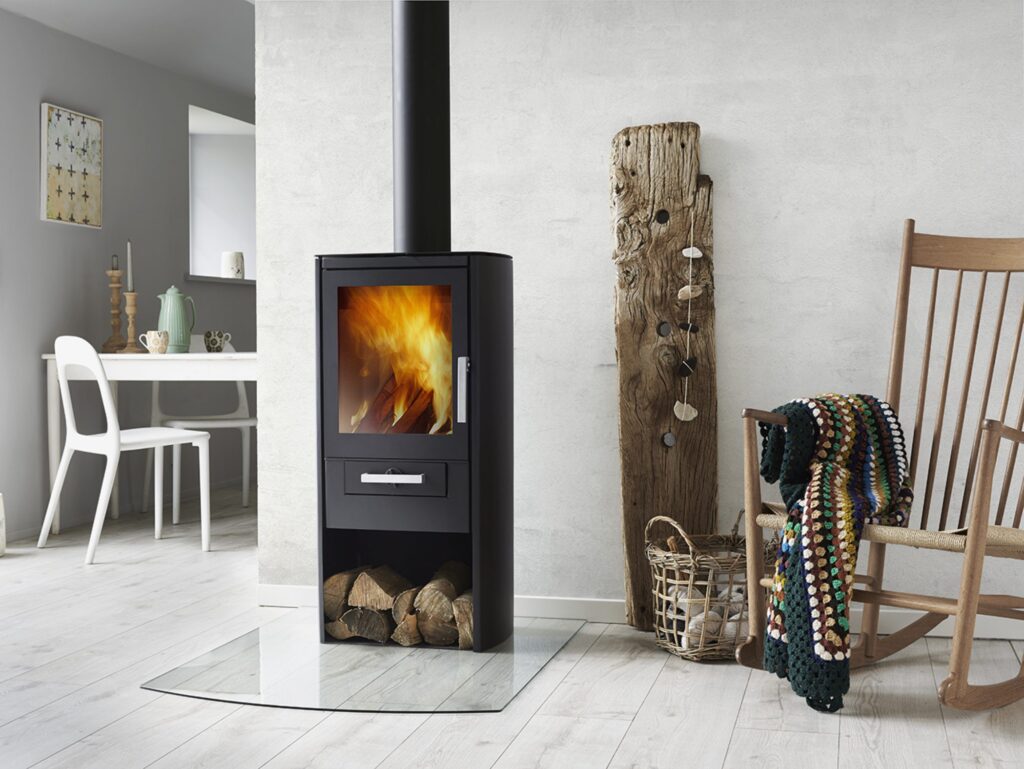Can you give us a brief history of the company?
Welsh Oak Frame started when our Sales Director and Co-owner of the company, Paul Edmunds, came up with an acorn of an idea that grew and grew… After completing an apprenticeship in carpentry and joinery, Paul’s fascination with oak-framed building began in 1977, when at the age of 18, he bought a felled oak tree for just £12. The 300-year-old tree was hanging over into the road and was becoming a danger to the general public. When Paul spoke to the farmer about it, he challenged him to cut it down, which he did, and Paul had the oak tree milled down so he could build with it. Paul was joined by his cousin, architect John Edmunds and together they formed Welsh Oak Frame, and sister company Arboreta, and have gone from strength-to-strength and expanded our team since then.
Which services do you offer your customers? What is the stage-to-stage process of completing a project with Welsh Oak Frame?
We offer a tailored service to suit your requirements and work closely with you throughout your project. Our in-house design and planning team can create a completely bespoke design, taking it through to planning application submission. Once planning permission is granted and a contract agreed, we then produce building regulation drawings. Alternatively, if you have existing drawings, we are happy to work with you and your architect to provide a cost for the supply and erection of the frame, or to design an oak frame that works with your design.
Preparing and agreeing the design takes around six weeks, and the planning application process takes about 12 weeks in total. Delivery timescales depend on the size and extent of the work involved, however a typical 3 bedroom cottage-size oak frame will arrive on site around 10-12 weeks after signing the contract. Depending on size, style and site logistics, a typical oak frame will usually be erected within one to two weeks; after which we begin any other associated works.
What is unique about oak frame and what does it add to a property?
Oak framing is a versatile construction method as not only is it ideal for those who want to build a new home with the character of a period property, it also works well with modern designs that embrace contemporary architecture with large glass panels for a light-filled home.
Dating back to Tudor times, this style of home still remains extremely popular. An incredible amount of skill and craftsmanship goes into creating an oak-frame home and you are able to tailor every element to create your dream design.
Building with oak frames is one of the most eco-friendly construction techniques. Welsh Oak Frame’s timber structures are made from Green Oak, which, as well being strong, durable and aesthetically pleasing, is also carbon neutral – meaning it doesn’t release carbon dioxide into the atmosphere like some other building materials. Oak frames are sustainable because the trees are replanted, and because the wood occurs naturally it doesn’t require large amounts of energy to manufacture.
Construction can also be quicker with oak frames in comparison to other building methods. Welsh Oak Frame’s timber structures can be raised within a few weeks, rather than months, so this speeds up the building process and cuts costs. Because the frame is constructed very accurately it will be erected quickly and easily.
Oak frame houses offer better insulation and can reduce heating bills.
Timber is a strong and durable material and you can be sure that Welsh Oak Frame buildings will stand the test of time
How does your team ensure a truly bespoke solution for every customer?
We will always sit down in the beginning to understand exactly what that customer wants and then we will work with them every step of the way to achieve their dream.
Every oak-frame structure has traditional hand-carved detailing and we incorporate this character and charm into the oak using a range of specialised techniques, which have passed down to us through the generations. When crafting each frame, lots of the preparation and hard work revolves around a range of modern electrical tools and, because of the weight of the oak, we only use the best forms of engineering technology. Alongside this, our specialised team of craftsmen add individual handcrafted detail to each oak-frame structure by softening the wood and making it more supple, as well as exploring other age-old techniques like chamfer, lambs tongue and dovetail cogs.
Can you tell us more about your designers and craftsmen?
As we mentioned in the first question, Paul Edmunds our Sales Director played an integral part in setting up the business 20 years ago with his co-founder and cousin, John Edmunds, who is Design Director and also Co-owner of Welsh Oak Frame, The Design Manager, Emyr Davies, has worked with Welsh Oak Frame as a freelance designer for nearly nine years. More recently, he’s taken on a permanent role managing the design department. Emyr is trained in architectural technology so his approach to crafting a new house design is always looked at from a technical and planning perspective too.
Our handcrafted methods are based on a medieval style of working and we have a dedicated team of eight craftsmen in the workshop. We like to take on apprentices to train them up ourselves. It can take up to five years until they are fully trained with the unique techniques we are renowned for.
What does your collaboration with BM TRADA involve?
We maintain a close collaboration with accreditation body, BM TRADA, to ensure our structures and panelling systems are approved to the highest standards, with full structural warranties. Only the highest quality materials and workmanship go into creating our oak frames.
Which awards or accreditations have you received?
In the 2013 Build It Awards we won ‘Best Use of Oak Frame’ and we were also a winner at the LABC All Wales Building Excellence Awards 2012.
What trends are you noticing in your market at the moment?
The Government has proposed a ‘Right to Build’ scheme, which will force councils to supply self-builders and custom builders with plots of land if they ask for it. They’ve also extended a long-standing ‘revolving fund’ to help enable developers turn land into serviced plots (the fund will now stand at £150m and will help provide 10,000 serviced plots) and they are looking to extend the already successful ‘Help to Buy’ scheme for self-builders.
Channelling funds into creating serviced plots that are ready for self-builders to use is ideal, as this will put in place the infrastructure; removing a difficult part of the process and getting things started for self-builders. Often it’s the initial stage that can prove the most troublesome, as you have to consider important factors such as the sewerage, water and electricity systems. Many first-time self-builders may not have considered the possible hiccups that could occur at this stage, so by offering these ‘ready-made’ serviced plots, the Government will certainly make the whole self-building process easier. We believe that self-builders should be nurtured for their courage and creativity, and this announcement is certainly a step in the right direction towards that.











